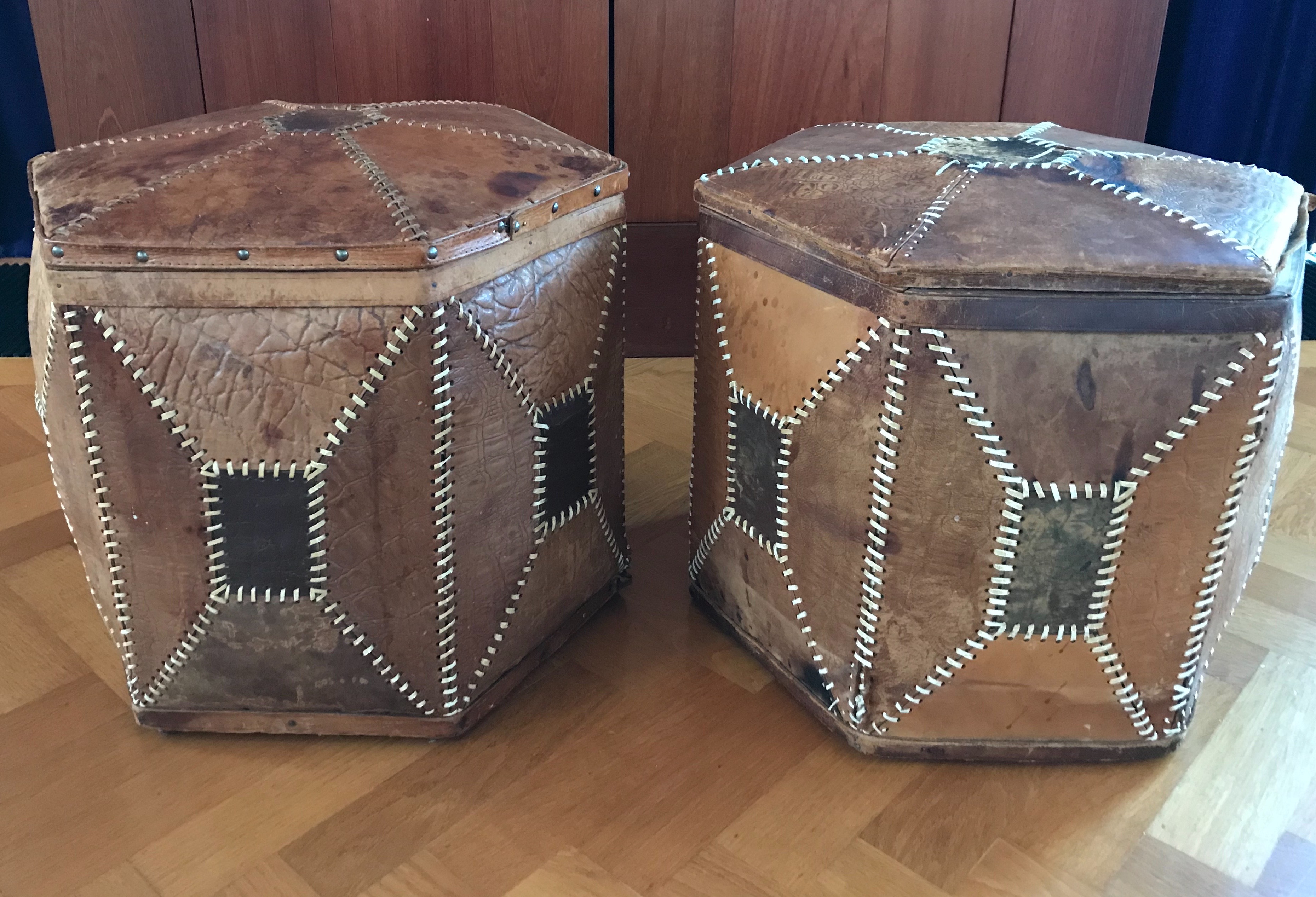Recently, while emptying out my mother’s house after she passed away in January, I discovered among the untold amount of knick-knacks a few leather items belonging to my grandfather. The photo shows two poufs that my grandfather made, probably for his pleasure, about 100 years ago. Proof of the durability of this material and the fact that leather is totally in my Dna! High time to write this personal blog.
Even as a little girl, I was fascinated by leather; that smell, the feeling when you touch it…. Recently I spoke to the director of the Leather Museum, he articulated that feeling beautifully; “when leather touches you, it gets into your blood like a virus and never lets go.
My grandfather on my mother’s side worked at a tannery as a manager and chemist. His father and his brothers owned their own tannery. Back in 1919, my grandfather’s oldest brother started his own business in the manufacture of harness- and technical leather. Two years later, he and his brother associated to the firm Gebroeders Gijsbrechts. My grandfather was allowed to study as the youngest in the family. He joined the tannery N.V. van Baak in Breda in 1917, where he celebrated 25 years of service in 1942. My grandfather’s last working years he worked in Terheijden at the Rompa company.
Unfortunately, I only found out about this beautiful piece of family history when I started working with leather myself in my final year of art school. My grandfather had passed away by then.
How I would have loved to talk to him about our shared passion! Who knows all the things I could have learned from my grandfather… I’ll never know. At the Art Academy in Den Bosch where I took my training, we were taught nothing about leather processing in the garment industry. And certainly not about how the processes go from skin to leather. Everything I know about it now I had to make myself my own on a self-taught basis.
It is an eternal shame that so much special, specialized knowledge that once existed in our country has almost all been lost. When you consider that in 1891 there were no less than 538 tanneries in northern Brabant alone, and that in 1986 there were only 36 left*, it is not surprising that today there are only a handful of “old wise men” at most left with a complete knowledge overview of the entire leather processing process. Currently, 2019, only one and a half tannerie is still operating in the Netherlands.
Fortunately, some small-scale tanners have come back in recent years. For many years, the tanning profession and its knowledge was not at all hip; it had quite an old fashioned image. But thanks to “looking closer to home,” attention to environmental concerns and new appreciation for craftsmanship, we are seeing good developments that will hopefully be the salvation for some crafts.
I am so happy to be able to contribute to this. Therefore, the knowledge transfer about the material leather plays a big part in my training. For example, we closely follow developments in cultured leather and animal-free alternatives. I hope that more knowledge will also create more space and time for experimentation and innovation.
A rediscovered knowledge and mastery of this material can provide creative impetus and stimulate design, fashion and industry.
* Seelen . J and Vogel .A, The history of leather tanning in North Brabant, Tilburg 1986.

